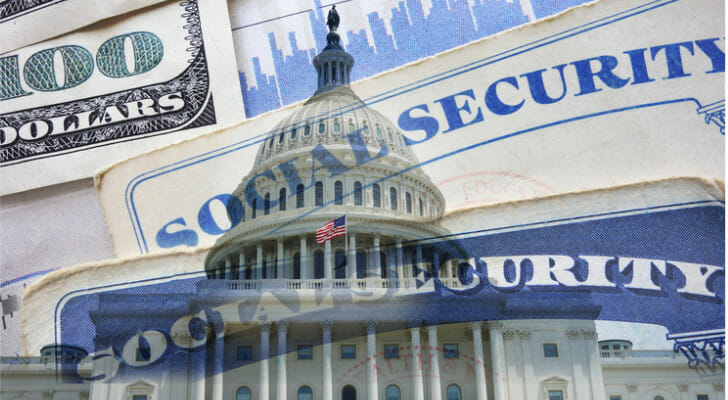Inflation has finally pushed Mark Hawkes to his breaking point.
A few months ago, he decided to cancel his gym membership. “I can do workouts at home,” says Hawkes, 62, from Madison, South Dakota, citing isometric exercises as his preferred alternative. He also plans to significantly downgrade his family’s cable TV service, possibly cutting the cord entirely in favor of over-the-air TV and streaming services.
Despite these cutbacks, Hawkes is spending $2,500 to remodel his bathroom, a project driven more by his wife’s wishes than necessity. “We really didn’t need to but my wife wanted to,” he explains. “It’s a little dated.”
Two years after pandemic-related shortages drove inflation to a 40-year high of 9.1%, American consumers are displaying contradictory behaviors. Many households are cutting discretionary spending and focusing on practicality, yet they still splurge on desired items, according to analysts.
Items like clothing, furniture, and dining out are falling out of favor, while vacations, concerts, and jewelry are seeing increased spending. “For categories where they find less expensive alternatives that fulfill their needs, they are doing that,” says Tamara Charm, a partner at McKinsey & Co., which analyzes consumer behavior and retail sales. “At the same time, they have the economic means to open their pocketbooks when they feel the compulsion.”
What are consumers buying the most?
Americans are reducing their purchases of goods that were popular during the pandemic and spending more on experiences, though they are selective about which experiences to invest in, Charm says. Lower-income households have been hit harder by inflation and are prioritizing essentials like rent. Credit card debt reached a record high late last year, though some of it was paid off in the first quarter. Delinquencies, particularly among lower-income groups, are at their highest since 2011, according to the Federal Reserve.
Meanwhile, less affluent households have largely exhausted their pandemic stimulus savings. Middle- to upper-income groups, whose wages have kept pace with inflation over the past year, are being more selective in their spending, McKinsey reports.
“The customer at the lower tier has to make choices based on rent and family obligations,” says Macy’s CEO Tony Spring. “The customer at the higher tier is going to do it based on where she has interest or they have interest and passion.”
Hawkes, who dropped his gym membership and is downgrading his cable service, was driven by sharp increases in car insurance and cable bills, as well as a 15% rise in property tax. With plans to retire in five years, he wants to ensure a comfortable nest egg for himself and his wife. While spending $2,500 on bathroom materials, he’s saving on labor by doing the work himself. They’re also planning an exotic trip this fall to Costa Rica or Hawaii but will stay at an extended-stay hotel with a kitchen to avoid costly restaurant meals.
“We’re feeling the (price) pressure… a lot of ways,” he says.
Is inflation improving?
Annual inflation has dropped significantly from its 2022 peak but has stagnated since last fall. A recent report is expected to show it held steady at 3.4% in May. Although inflation is down, consumers still feel the cumulative effect of rising prices since 2021, says Gregory Daco, chief economist at EY-Parthenon.
Consumer sentiment fell sharply to a five-month low last month, according to a University of Michigan survey.
Is US consumer spending increasing?
Consumer spending, adjusted for inflation, dipped in April after a strong first quarter. Some economists speculate this could signal a more sustained slowdown, potentially jeopardizing forecasts for a “soft landing” where the Federal Reserve’s high interest rates curb inflation without causing a recession. With lower-income groups struggling, higher-income households might need to sustain the economy, as the top 40% of income earners account for about 60% of all spending, Daco says. In the first quarter, households earning at least $100,000 were the only ones to increase discretionary spending, according to Circana.
Overall, 40% of Americans say they’re splurging, down from 51% in 2021, McKinsey reports.
How is inflation changing consumer behavior?
More affluent households are showing signs of financial strain. Even as they splurge, many are “trading down,” shopping at discount stores or online to save on groceries and other staples, Charm says. Higher-income shoppers contributed to Walmart’s strong profits in the first quarter, officials noted.
Americans across various income groups are spending less on discretionary items to afford essentials, according to Circana. Walmart’s CFO John David Rainey highlighted this shift, noting consumers are prioritizing nondiscretionary categories over general merchandise.
In grocery stores, shoppers increasingly opt for generic brands over name brands, says Marshal Cohen, Circana’s chief retail industry adviser. They’re also delaying discretionary purchases. For instance, they won’t buy sweaters until it’s necessary and may even forego replacements for fraying furniture unless it’s essential.
Are people eating out less now?
Many Americans, especially those in households earning less than $75,000, are dining out less frequently. A recent Vericast survey found 68% are opting for groceries over restaurant meals, which have seen a 5.1% annual price increase compared to a 1.2% rise in grocery prices. Some are also choosing less expensive dining options, moving from fine dining to casual dining or from casual dining to fast food, according to McKinsey and Barclays.
Mike Jacobs from Alexandria, Virginia, a retired federal government worker with a six-figure pension, has reduced his dining out frequency from several times a week to once every few weeks, citing increased prices and diminished service quality.
What are people buying?
Consumers are prioritizing experiences such as vacations, concerts, and blockbuster movies like “Barbie” and “Oppenheimer.” Jewelry is also back in favor as it enhances one’s appearance for outings. Charm notes that while jewelry fell out of fashion for a while, people realized they still enjoy wearing it. “If there is something they want that is at the right value, they will buy it,” she says.




